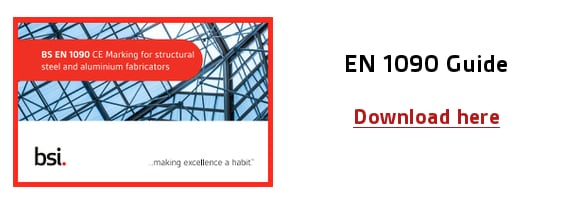
Now that CE marking of structural steelwork and aluminium structures is mandatory it may be an appropriate time to look at some of the fabrication requirements within the specification, BS EN 1090 Part 2, that must be complied with in order to be able to apply a CE mark. It is suggested that Job Knowledge No. 120 – Structural Steel, CE Marking and ISO 3834 should be read in conjunction with this article. It should also be noted that no brief article such as this Job Knowledge article can cover every aspect of a specification requirement - the specification itself must be referred to for accuracy.
Service categories are determined from Table B.1 of BS EN 1090-2. Have been determined for a building, Table B.3 of BS EN 1090-2 defines. The EN 1090 standards are European standards that regulate the fabrication and assembly of. EN 1090-2: Technical requirements for the execution of steel structures; EN 1090-3. Create a book Download as PDF Printable version.
Part 1 of the BS EN 1090 series specifies the requirements for conformity assessment of what are termed the performance characteristics of the structure – essentially those criteria such as toughness, fire resistance, fatigue performance etc – and requires the implementation of a factory production control (FPC) system – see Job Knowledge No. 120 for further information.
BS EN 1090 Part 2 is entitled “Technical requirements for the execution of steel structures” and specifies the requirements for the manufacturing of structural steelwork - this includes both bolting and welding. The steels covered by the specification comprise not only the conventional carbon manganese steels such as EN 10025 S275 but also high strength steels up to grade S960, ferritic, austenitic-ferritic and austenitic steels. This article will not cover what may be termed the conventional requirements for welding such as procedure qualification, welder qualification, welding plan requirements etc but will attempt to highlight those requirements that may not be normal practice within the fabrication shop. There are several clauses within the specification that may cause some difficulties if the requirements are strictly enforced and no concessions are permitted. For example clause 5.5 states that all welding consumables shallcomply with EN 13479, the general product standard for filler metals and fluxes – the term “shall” makes this mandatory and consumables complying with other specifications only, the AWS standards for example, cannot be used.
The same does not apply to parent materials where specifications other than the European material specifications can be used “.if otherwise specified.” The quality of cut edges is dealt with in clause 6.4. This requires that any ‘free’ cut edge, but not weld preparations, complies with limits on tolerance, hardness and smoothness. A footnote states that hand thermal cutting should only be used if it is not practical to use machine thermal cutting. If specified in the contract documentation thermally cut edge hardness shall not exceed 380HV 10 for hot finished or normalised S235 to S460 steels and 450HV 10 for cold forming or quenched and tempered S260 to S700 steels. Although this requirement may not be mandatory for all contracts it would be advisable to produce a qualification test record to demonstrate compliance. The clause also requires that the “.capability of thermal cutting processes shall be periodically checked.”. The period between checks is not specified.
The checks comprise the production of four samples, one each from the thickest and thinnest product and one each from a sharp corner and a curved cut from products of representative thickness. Records of such periodic checks should be maintained for audit purposes. Clause 6.5 is entitled ‘Shaping’ and permits hot and cold forming and flame straightening “.provided the properties are not reduced below those specified for the worked material.” and calls up the guidance given in TR 10347 ‘Guidance for forming of structural steels in processing’. For many structural steel fabrication companies, hot and cold forming is sub-contracted to specialist benders; these must supply the fabricator with documentary evidence that the properties have not been reduced below those specified for inclusion in the as-built QA documentation pack.

Flame straightening, however, may be carried out by the fabricator and, for EXC3 and EXC4, a written procedure is required that details the maximum temperature, method of heating, workers permitted to use the process and the results of mechanical tests carried out for the process approval. Renko bars indikator. A procedure qualification record (PQR), similar to that of a welding PQR, is therefore required. Clause 7 covers the welding requirements, most of which are relatively conventional but there are some additional requirements that need to be taken into account as follows: • Cl 7.4.1.2.b(3) requires procedure qualification tests to be carried out on test pieces with the maximum prefabrication primer thickness if welding is carried out over shop primers. Active anti cheat lineage.